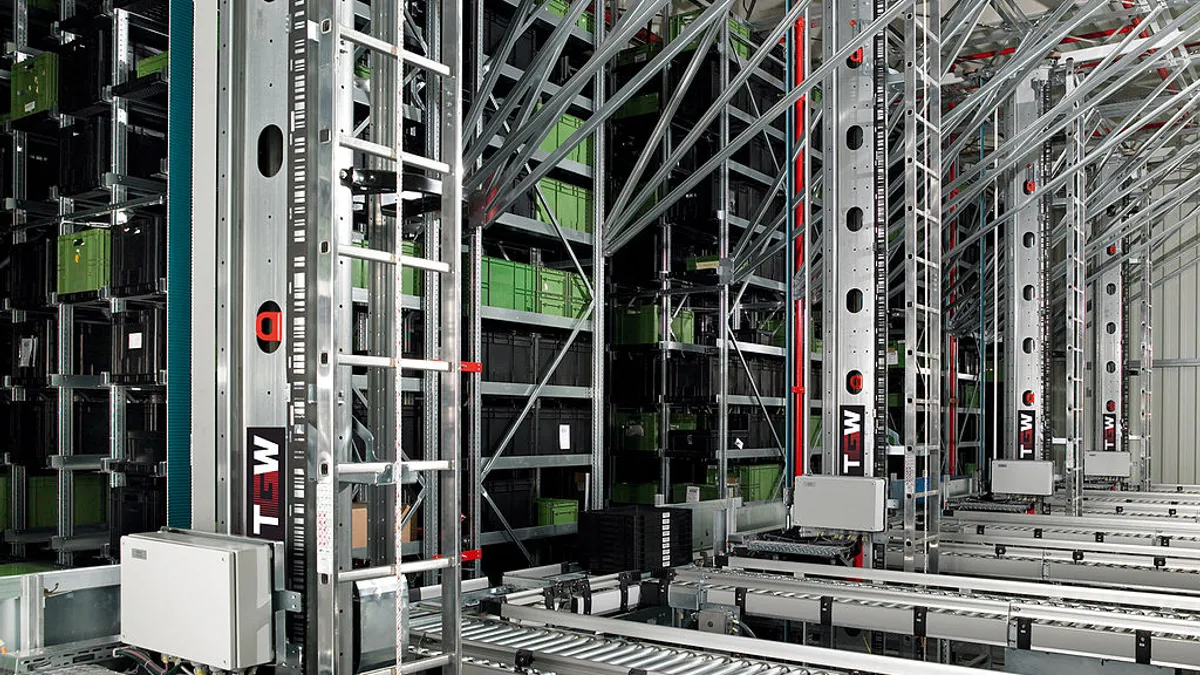Dive Brief:
- Just-in-time ordering, direct-to-consumer distribution and shifting retailer-wholesaler relationships are decreasing the number of large-pallet orders received by distributors, Materials Management & Distribution reports. In turn, the growth of small, multiple SKU orders are forcing warehouses to automate.
- Automated, efficient mini-load storage and retrieval systems (AS/RS) address this market challenge by employing lightweight cranes that can sort individual totes, trays, cases and crates while optimizing storage and releasing key delivery and labor resources.
- The systems maximize supply chain efficiency through the automation of key processes, including goods arrival, maximized inventory storage, and the fulfillment of outbound shipping orders, the magazine reports.
Dive Insight:
Many modern warehouses are seeing a growing need for layer picking due to the increase in smaller and more frequent orders. The result is a rise in labor intensity, exhaustion and expense, which can easily be solved by automating the process through robotics.
While fear exists that robots will replace humans in warehouse jobs, the fact is that human workers are now in short supply due to limited income opportunities within the field. Further, the types of work performed by robots is mostly rote: articulated arms attached to fast-moving bases, picking quickly and on a limited basis. The Robotics Industry Association estimates that 265,000 robots are currently operating in factories in North America.
In addition, automating processes can help free personnel to engage in more creative tasks, and push companies towards greater innovation.














